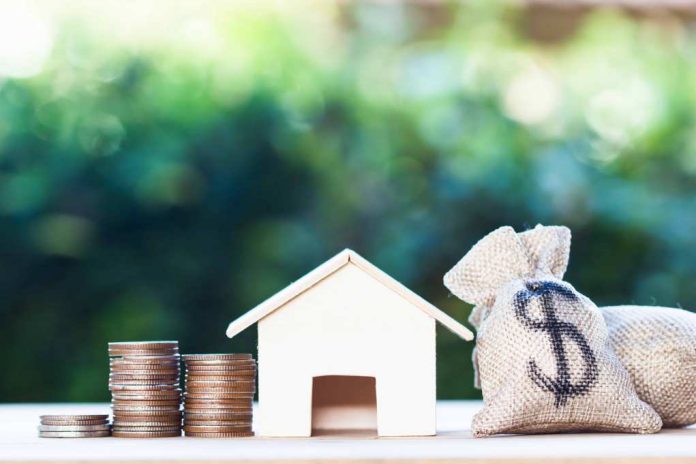
Many people have a hard time keeping up with housing costs, especially in this day and age. According to the United States Department of Housing and Urban Development (HUD), a household should not spend more than 30% of their gross income on housing expenses if they want affordable housing. Anything past 30% can make a household cost-burdened and is not considered affordable. When households find themselves cost-burdened, they can have a hard time handling other expenses like food, healthcare, and more. It is important to find housing that works with your budget.
Besides helping people with affordable housing, some popular housing assistance opportunities can help people achieve their goals of buying a home. Luckily, there are popular housing assistance opportunities to consider. These opportunities can make a world of difference for people in need. However, before diving into some different opportunities to consider, it is important to have a clear understanding of what affordable housing means for your current situation.
Understanding Affordable Housing
Even though the general rule of thumb is to keep housing expenses at no more than 30% of your gross income, it is important to keep in mind that 30% can be a different number depending on your income. For example, someone who has a gross monthly income of $10,000 would consider $3,000 a month towards housing expenses as affordable. On the other hand, a person that makes $1,000 a month would consider $300 a month towards housing expenses as affordable. To find out what would be affordable housing with your income, you will want to take the amount of income you make before any taxes are applied. Then you will multiply that number by .30. The total that you get will be what you want to put towards housing expenses every month if you aim to get affordable housing.
Popular Housing Assistance Opportunities
There are a variety of popular housing assistance opportunities to consider. These support options come from a wide range of sources from the federal government, to nonprofit organizations, and more. Some opportunities that are worth considering when trying to improve your housing situation include:
Housing Choice Voucher Program
This program focuses on providing low-income families with affordable housing, also known as Section 8 housing. It is a program that is available through the United States Department of Housing and Urban Development (HUD). However, local public housing authorities (PHAs) manage the program. This support opportunity will provide housing choice vouchers to people that qualify. The vouchers can be used at properties (like apartments, townhomes, single-family houses, etc.) that accept them as a form of payment. Not every property will accept these vouchers in the private market. The ones that do accept these vouchers will need to meet requirements from the local PHA which includes passing an inspection that the local PHA will conduct. The housing needs to be decent, sanitary, and safe.
The voucher amount will be paid directly to the landlord on behalf of the recipient by the local PHA. The recipients then have the responsibility to pay the difference between the actual cost of rent minus the voucher amount that was applied. By PHA authorization, recipients may even have the opportunity to buy a modest home.
Who Qualifies for This Program?
The specific eligibility requirements will vary depending on your local PHA. Even though the specifics will vary, there are generally four pieces of criteria that local PHAs will consider, including:
- Income Level
- Citizenship Status
- Eviction History
- Family Status
There are some general rules to keep in mind when it comes to eligibility. For example, a family’s income will typically not be able to exceed 50% of the area’s median income (AMI). If you want to apply for this program you need to expect to give documentation along with your application. For more information you will need to get in touch with your local PHA.
Public Housing
Another housing assistance option from HUD is Public Housing. Even though this is a HUD program, it is managed locally by Housing Agencies (HAs). This program provides a variety of properties like apartments and single-family houses to recipients at an affordable rate. With this set up, your local HA would essentially be the landlord. They have the responsibility of managing the housing while HUD works behind the scenes with planning and developing the properties.
Not everyone is eligible for this assistance opportunity– the aim is to help low-income people in need. Some eligibility factors that your local HA will consider includes:
- Income Level
- Family Status
- Citizenship Status
- References that You Provide
The amount of rent that you will need to pay also goes by the name of Total Tenant Payment (TTP). This amount takes into consideration your family’s gross annual income. If you want to apply for this program you will want to get in touch with your local HA. You will need to be prepared to provide documentation along with your application.
If you run into a hard time while trying to contact your local HA then you can also get in touch with your local HUD Field Office.
Supportive Housing
There is a variety of supportive housing available that may be able to help people in need. Some opportunities include:
- Transitional Shelters
- Emergency Shelters
- Permanent Supportive Housing (PSH)
- Rapid Re-Housing (RRH)
Transitional Shelters
One type of supportive housing is transitional shelters. The services that these shelters provide and the length of time that people will be able to stay will depend on the shelter. Generally, people will be able to stay in these shelters for six months to 24 months. Some of the services that people can benefit from focus on their health, employment, and more. This is a great opportunity for people dealing with homelessness.
Emergency Shelters
Sometimes, unfortunate circumstances cause households to deal with a crisis that put them in need of shelter as soon as possible. Emergency shelters come into the picture in cases such as these. Emergency shelters aim to be the first place that families can turn to when they are in need of short-term stability. How long a person will be able to stay in these shelters can vary depending on the shelter. You will want to check out local options to see what is available. These shelters can help people find a housing solution that will work in the long term while providing support in the short term.
Permanent Supportive Housing (PSH)
It should come as no surprise that PSH is a type of supportive housing opportunity. It’s in the name!
This type of housing is designed to help people that are chronically homeless. HUD defines an individual as chronically homeless if they live in:
- Emergency Shelters (for a minimum of 12 months or a minimum of 4 separate times over 3 years that totals 12 months)
- Places not fit for people to live (for a minimum of 12 months or a minimum of 4 separate times over 3 years that totals 12 months)
- Safe Havens (for a minimum of 12 months or a minimum of 4 separate times over 3 years that totals 12 months)
- Institutional Care Facilities (for less than 3 months and have also lived in the options listed above before entering the facility)
A lot of the people who benefit from PSH have either physical disabilities or mental disabilities. That is why this long-term support is so important. Besides offering housing stability and safety, it also provides support services.
It’s important to note that this is a type of “housing first solution.” These types of housing focus on the recovery of individuals while supporting them to become independent and get them into permanent housing as quickly as possible.
Rapid Re-Housing (RRH)
Another type of “housing first solution” opportunity is Rapid Re-Housing. Unlike PSH, it aims to help people that don’t normally deal with homelessness. When people don’t deal with homelessness often it is known as non-chronic homelessness. This type of housing solution can provide affordable rent to people in hopes of getting them out of their homeless situation quickly. It also comes along with temporary community support services!
Chenoa Fund
The Chenoa Fund is a down payment assistance program that is available across the country. It is not a federal program. Instead, it is available through the CBC Mortgage Agency. This agency is a federally chartered government entity. The goal of this agency is to improve the affordability and sustainability of homeownership with special focus on individuals that struggle with their credit or income. Even though there is a special focus on these groups of people, it isn’t limited to them! In fact, anyone that meets the minimum requirements of this support opportunity can qualify.
Who Qualifies for the Chenoa Fund?
The minimum requirements for this program will vary depending on the type of home loan that the buyer has. For an FHA home loan, individuals that want to benefit from the Chenoa Fund will need to meet the following minimum requirements:
- Have a FICO credit score of at least 620
- Have a debt-to-income ratio of at most 45%
On the other hand, if you are an individual with a conventional that wants to benefit from the Chenoa Fund, then you will need to meet the following minimum requirements:
- Have a FICO credit score of at least 640
- Have a debt-to-income ratio of at most 50%
- Not have an interest rate that is over 2% on your first mortgage
- Have a second mortgage term of 10 years
How Much Assistance Can You Get?
The most down payment assistance that this program can provide is up to 3.5% of the price of the property that an individual is trying to buy. If eligible to receive the assistance, it will come in the form of forgivable or repayable second mortgage loan options.
FHA Home Loans
When it comes to buying a home, there are a lot of different loans to consider. One opportunity is loans that the Federal Housing Administration (FHA) insures. However, even though the FHA is the entity to insure these loans, they are provided by banks or other approved lenders. People can benefit from this loan opportunity thanks to the low down payment requirements and easier qualifications than a conventional loan. Individuals may be able to provide down payments as low as 3.5% if they meet certain eligibility criteria. For example, an individual with a credit score of at least 580 will be able to get a 3.5% down payment. On the other hand, individuals with a credit score of 500 to 579 can still qualify for these loans but at a down payment of 10%. FHA is ideal for new homebuyers.
While the FHA is known for insuring traditional mortgages, they also have other loan types like:
- 203(k) Home Improvement Loans
- Energy Efficient Mortgages
- Home Equity Conversion Mortgages
- Section 245(a) Loans
203(k) Home Improvement Loans
This is a type of home loan that comes along with extra money. The extra funds can go towards handling home improvement expenses, renovation expenses, and home repair expenses.
Energy Efficient Mortgages
Similar to 203(k) loans, the extra funds given here can go towards handling energy-efficient home improvement expenses, which can help lower bills.
Home Equity Conversion Mortgages
This is a type of reverse mortgage. Senior homeowners that are at least 62 years old can tap into their home’s equity and get money from it with this type of home loan. They can choose how to receive such funds–either in monthly payments, a credit line, or both.
Section 245(a) Loans
This type of home loan starts off with low monthly payments and it is ideal for people whose incomes will eventually increase. However, this means the payments will increase over time. The benefit is that it shortens the overall loan term.
Bottom Line
There are a variety of housing assistance opportunities available for people that need some support. Whether they are trying to get affordable housing or need help buying a home, there is more support than many people may think. The best part is that we only listed a few options but there are plenty more that we didn’t touch on. You can review different opportunities online by checking out Benefits.gov. This website allows users to view over 1,000 different government benefits available. You may be able to find even more support that could help your current situation.




























